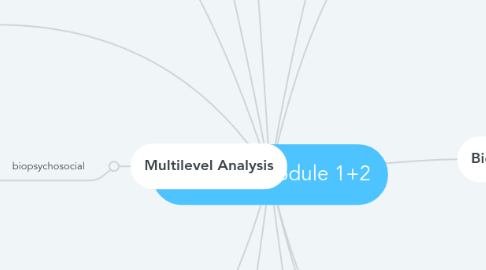
1. psychodynamic
2. Another School of Thought: Gestalt Psychology
2.1. focused not on how we feel, but on how we experience the world
2.2. led by Max Wertheimed
2.3. the whole of an experience can be more than the sum of its parts
2.3.1. ie: old lady vs. young lady illusion
2.4. Modern Day Schools of Thought
2.4.1. Evolutionary Perspective
2.4.1.1. focus on Darwinism, theory of evolution by natural selection
2.4.1.2. behavior is inherited
2.4.1.3. the study of our ancestor's genes - nature affects our personality
2.4.2. Humanist Perspective
2.4.2.1. peaked in 1960's and 1970's
2.4.2.2. focus on growth potential, our need for love and acceptance, spirituality, and free will
2.4.2.3. goal: to strive to be the best we can be (self actualization)
2.4.2.4. associated with Rogers and Maslow
2.5. Second School of Thought: Functionalism
2.5.1. William James examined the functions of our thoughts and feelings
2.5.1.1. believed thinking was adaptive and contributed to our survival
2.5.1.2. challenged Harvard's traditions with Mary Calkins; Harvard denied her degree
3. wrote the first psychology text which was titled "Principle Psychology"
4. Multilevel Analysis
4.1. biopsychosocial
4.1.1. cognitive
4.1.2. behavioral
4.1.3. humanistic
4.1.4. biological
4.1.4.1. evolutionary
5. psychology
5.1. the science of behavior and mental processes
5.1.1. science- a way of asking and answering questions
5.1.2. behavior- anything an organism does; any action that can be observed and/or recorded
5.1.3. mental processes- internal, subjective experiences; sensations perceptions, dreams, thoughts, beliefs, and feelings
6. Schools of Thought
6.1. First School of Thought: Structuralism
6.1.1. started w/ William Wundt's first psychological laboratory and his concept of introspection
6.1.2. didn't stick in world of psych b/c we didn't know why we feel what we feel and do what we do
7. Psychological Science
7.1. Unconscious
7.2. Conscious
7.3. Thinking Errors
7.3.1. hindsight bias: the tendency to believe, after learning an outcome, that one would have foreseen it: “I knew it all along” phenomenon
7.3.2. overconfidence: the tendency to think we know more than we do
7.4. Critical Thinking
7.4.1. Curiosity: the passion to explore and understand without misleading or being mislead
7.4.2. Skepticism: persistently asking questions without being cynical, such as “What do you mean? How do you know?”
7.4.3. Humility: the awareness of your own vulnerability to error and the openness to new ideas
8. Major Forces In Psychology
8.1. Psychoanalysis
8.1.1. Sigmund Freud emphasized the ways emotional responses to childhood experiences and our unconscious thought processes affected behavior
8.1.1.1. Freud define psychology as: the science of mental life
8.1.2. Freud believed that we protect ourselves from our real feelings by using defense mechanisms
8.2. Behaviorism
8.2.1. Watson and Skinner
8.2.2. early to mid 1900's: people started to ignore the way you felt inside and focused only on the study of observable behaviorism
8.2.3. goal: to change behavior
8.2.4. popular during 1950's when social appearance mattered more than expression
9. Cognitive Neuroscience Perspective
9.1. The study of brain activity linked with mental activity
9.1.1. explores the way we perceive, process, and remember information
9.1.2. focuses on how changing your thought process can change the outcome of the situation
10. Social-Cultural Perspective
10.1. states that much of your behavior and feelings are dictated by the culture you live in
10.1.1. ie: some cultures kiss as greeting
11. Psychology's Biggest Issues
11.1. Nature vs. Nurture
11.2. Stability vs. Change
11.3. Continuity vs. Discontinuity
12. Biopsychosocial Perspective
12.1. Biological Influences
12.1.1. natural selection
12.1.2. genetic predispositions
12.1.3. brain mechanisms
12.1.4. hormonal influences
12.2. Psychological Influences
12.2.1. learned associations
12.2.2. emotional responses
12.2.3. cognitive processing
12.2.4. perceptual interpretations
12.3. Social-Cultural Influences
12.3.1. presence of others
12.3.2. cultural/social/family expectations
12.3.3. peer and group influences
12.3.4. compelling models (social media, etc.)
